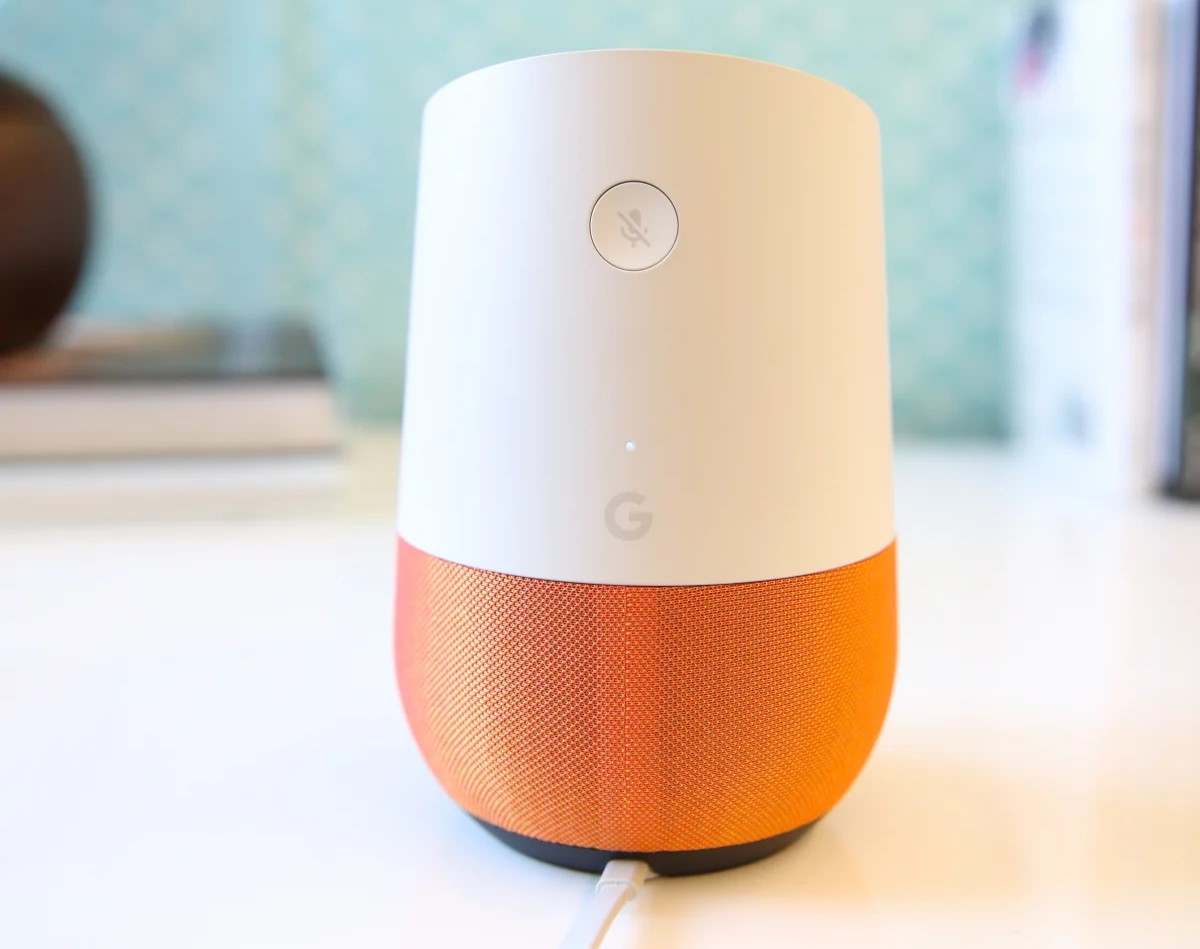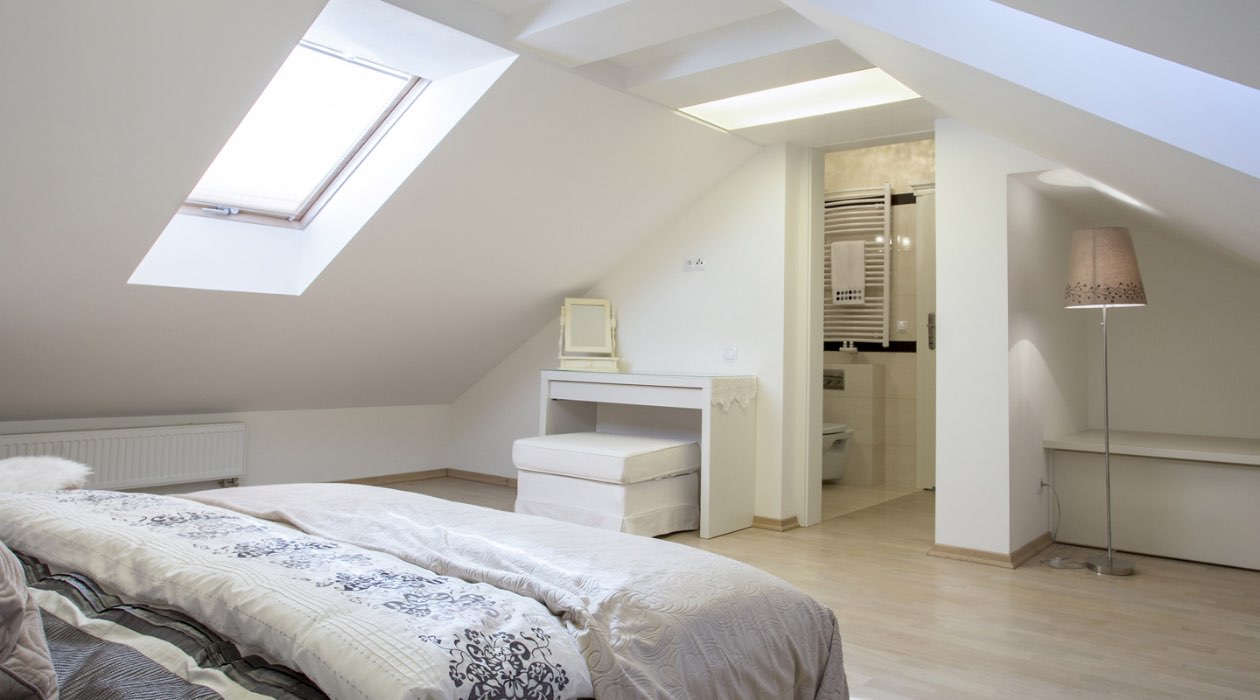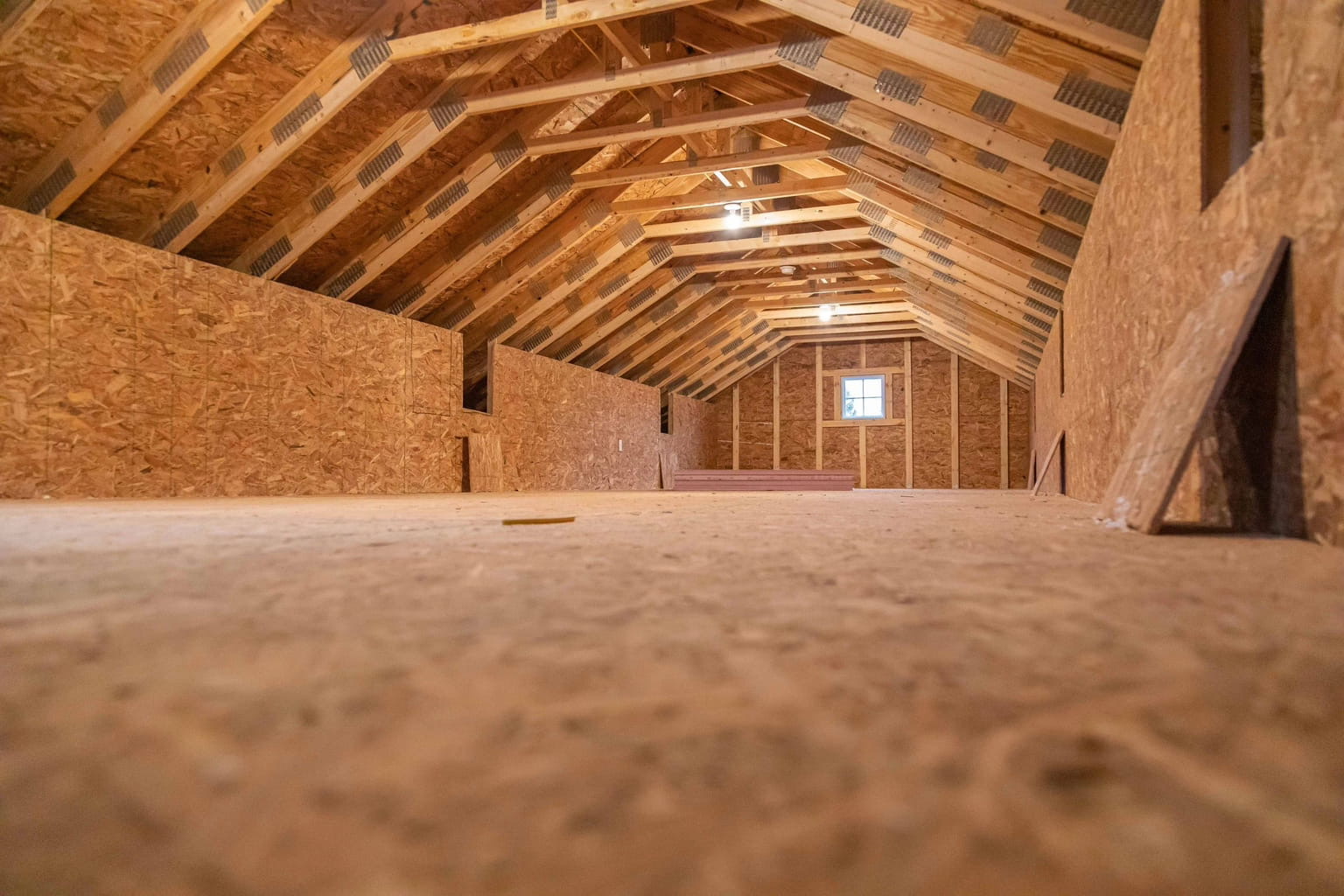

Articles
How To Know If There’s A Racoon In The Attic
Modified: January 6, 2024
Learn how to identify if there's a raccoon in the attic through our informative articles. Protect your home with our expert tips and advice.
(Many of the links in this article redirect to a specific reviewed product. Your purchase of these products through affiliate links helps to generate commission for Storables.com, at no extra cost. Learn more)
Introduction
Discovering that you have a raccoon in your attic can be a cause for concern. Raccoons are clever and resourceful creatures that can cause significant damage to your property if left unchecked. In addition to the physical damage, they can also pose health risks through the spread of diseases and parasites. Therefore, it is important to be able to identify the signs of a raccoon infestation in your attic, so you can take appropriate action to address the issue.
Raccoons are nocturnal animals, which means they are most active during the night. This can make it difficult to directly observe their presence. However, they leave behind various clues that can help you determine whether or not you have a raccoon in your attic.
By keeping an eye out for these signs and understanding what they mean, you can take the necessary steps to protect your home and prevent any further damage. In this article, we will explore the different indicators that can indicate the presence of a raccoon in your attic.
Key Takeaways:
- Identifying raccoon infestations in your attic is crucial to prevent property damage and health risks. Look out for signs like strange noises, foul odors, visual sightings, and nesting materials to take prompt action.
- Hiring professional wildlife removal services is essential for safe and effective raccoon removal. Their expertise, equipment, and humane approach ensure a thorough resolution, protecting your home and family from potential risks.
Read more: How To Racoon Proof Trash Can
Signs of a Raccoon Infestation
When it comes to identifying a raccoon infestation in your attic, there are several key signs to look out for. By being aware of these indicators, you can quickly address the problem and prevent any further damage to your property.
One of the most common signs of a raccoon infestation is the presence of strange noises coming from your attic. Raccoons are known for making loud scratching, thumping, or scampering sounds as they move around. If you hear these noises during the night when raccoons are most active, it’s a strong indication that there may be raccoons nesting in your attic.
In addition to the noises, raccoons can cause significant damage to your attic. They are notorious for tearing apart insulation, ripping up ductwork, and even chewing through wiring. If you notice any signs of damage, such as torn insulation or gnaw marks on wires, it’s highly likely that raccoons are the culprits behind it.
Another telltale sign of a raccoon infestation is a foul odor in and around your attic. Raccoons have a strong musky scent, and their urine and droppings can create a pungent odor. If you notice a strong, unpleasant smell emanating from your attic, it’s a clear indication that raccoons have taken up residence.
Visual sightings of raccoons in or around your property are also a definitive sign of an infestation. Raccoons are primarily active during the night, so if you see them roaming around during daylight hours, it could mean that their nesting site has been disturbed or that they are searching for food.
Raccoons leave behind distinct footprints and other traces that can help you identify their presence. Their footprints resemble small handprints and are often accompanied by drag marks from their tails. Additionally, raccoons may leave droppings in and around your attic, which are often dark, cylindrical in shape, and similar in size to dog droppings.
Furthermore, raccoons are known for creating nests in their chosen nesting sites. If you find nesting materials such as leaves, twigs, or even shredded insulation in your attic, it is a clear indication of a raccoon infestation.
While these signs are indicative of a raccoon infestation, it’s important to approach the situation with caution. Raccoons can be aggressive if they feel threatened, so it is highly recommended to seek professional assistance when dealing with a raccoon infestation in your attic.
Strange Noises in the Attic
One of the most reliable signs of a raccoon infestation in your attic is the presence of strange noises. Raccoons are energetic creatures that are known to be quite active, especially during the night when they search for food and shelter. If you hear unusual sounds coming from your attic, it’s essential to investigate further to determine if raccoons are the source.
Raccoons can create a variety of noises that may indicate their presence. Scratching sounds are commonly heard as raccoons move around your attic. They have sharp claws, which they use for climbing and digging. As a result, you may hear scratching sounds as they scurry across the surfaces of your attic, especially if they are nesting or searching for food.
Thumping or banging noises can also be indicative of raccoon activity. Raccoons are not the most graceful creatures, and they may accidentally knock over items or bump into walls and objects in your attic. If you consistently hear these types of sounds, it is likely that raccoons are exploring your attic space.
In addition to scratching and thumping noises, raccoons can create scampering sounds as they move about. Their quick footsteps can sound like a small creature running across your attic floor. If you hear quick and light footsteps during the night, there’s a good chance raccoons are present.
It’s important to note that these noises may not always be constant. Raccoons are nocturnal animals, so their activity levels tend to peak during the night and early morning hours. You may hear more noise during these times and less during the day when raccoons typically rest.
If you suspect that raccoons are causing the strange noises in your attic, it’s crucial to take action promptly. Ignoring the issue can lead to further damage, as raccoons are known to chew through insulation, electrical wiring, and even structural components of your home. Additionally, raccoons can transmit diseases and pose health risks to you and your family.
When dealing with raccoon infestations, it is recommended to seek professional help. Wildlife removal experts have the knowledge, experience, and tools to safely remove raccoons from your attic without causing harm to them or your property. By addressing the issue promptly, you can ensure the safety of your home and restore peace and quiet to your attic.
Damage to the Attic
Raccoons, with their sharp claws and strong dexterity, can cause significant damage to your attic if they have taken up residence. It’s important to be aware of the potential damage raccoons can do so that you can take necessary action to address the issue promptly.
One common type of damage caused by raccoons is to the insulation in your attic. Raccoons will often dig through and tear up insulation to create a comfortable nesting spot. This can result in reduced insulation effectiveness, leading to heat loss in the winter and increased energy costs.
In addition to insulation damage, raccoons are notorious for chewing through electrical wires. This behavior can pose a serious fire hazard and increase the risk of electrical malfunctions in your home. The gnawing and chewing habit of raccoons can cause short circuits or even spark a fire if exposed wires come into contact with flammable materials.
Raccoons may also tear or damage ductwork in your attic. They are known to rip apart ducts to gain access to different areas or to create additional nesting sites. Damaged ductwork can lead to reduced efficiency in your heating and cooling systems and result in increased energy consumption.
Structural damage is another concern with raccoon infestations. Raccoons can loosen or dislodge boards, panels, and other building materials in your attic as they move around and build their nests. Over time, this can weaken the structural integrity of your attic, leading to potential problems with your roof and overall home stability.
Another potential area of damage is the ventilation system in your attic. Raccoons may block or damage vents, interfering with proper airflow and ventilation. This can lead to moisture buildup, which creates an ideal environment for mold and mildew growth. Mold not only damages your attic but also poses health risks to you and your family.
It’s important to address any signs of damage as soon as possible to prevent further deterioration of your attic and potential costly repairs down the line. If you suspect a raccoon infestation and notice any of these types of damage, it is recommended to contact a professional wildlife removal service for assistance.
Professional wildlife removal specialists have the expertise to safely and effectively remove raccoons from your attic and repair any damage they have caused. They can also provide recommendations to prevent future infestations and protect your attic from further damage. By acting quickly, you can mitigate the potential risks associated with raccoon infestations and maintain the integrity of your home.
Foul Odor in and Around the Attic
If you detect a foul odor in and around your attic, it could be a strong indication of a raccoon infestation. Raccoons have a distinct musky scent that can be quite pungent, especially when they are living in close proximity to your living spaces.
Raccoons use their urine and feces to mark their territories and communicate with other raccoons. As a result, their waste can accumulate in your attic, leading to a strong and unpleasant odor. Raccoon urine has a distinct smell that is often described as strong and ammonia-like.
The accumulation of raccoon feces, also known as scat, can contribute to the foul odor. Raccoon scat is similar in appearance to dog droppings but is typically darker and cylindrical in shape. It is important to note that raccoon feces may carry harmful bacteria and parasites, which can pose health risks to you and your family.
In addition to the odor from waste, the presence of raccoons in your attic can result in other foul odors. Raccoons can bring in food items, such as garbage or animal carcasses, to consume or store in your attic. These food sources can spoil and emit strong odors, attracting other pests and further exacerbating the smell problem.
Furthermore, raccoons may also use your attic as a latrine, depositing urine and feces in various areas. The accumulation of waste materials can permeate the air, spreading an unpleasant odor throughout your attic and potentially into other areas of your home.
If you notice a persistent and foul odor in and around your attic, it’s important to address the issue promptly. The odor not only makes your living space uncomfortable but also indicates the presence of raccoons, which can cause significant damage to your property.
It is not recommended to attempt to remove or eliminate the odor on your own, as the waste material may contain harmful pathogens. Instead, it is best to call a professional wildlife removal service. These experts have the necessary tools and experience to not only remove the raccoons but also clean and sanitize the affected areas.
Professional wildlife removal services follow proper protocols to safely handle and dispose of the raccoon waste. They have the appropriate protective gear and use effective cleaning solutions to eliminate the odor and reduce the risk of contamination.
By addressing the foul odor and removing the raccoons from your attic, you can restore a fresh and healthy living environment in your home. Remember to always rely on professionals to ensure safe and efficient removal of raccoons and their associated odors.
Look for signs such as scratching or thumping noises, droppings, and damage to the attic. Check for entry points and monitor for raccoon activity at dusk or dawn. If in doubt, seek professional help.
Read more: Why Is My Thermostat On, But There’s No Heat
Visual Sightings
One of the most obvious signs of a raccoon infestation in your attic is visual sightings. While raccoons are primarily nocturnal animals, it is not uncommon to spot them during the day if they feel comfortable or their nesting site has been disturbed.
If you observe raccoons entering or leaving your attic through openings or holes in your roof or siding, it is a clear indication that they have made your attic their home. Raccoons are skilled climbers and have no trouble scaling trees or buildings to gain access to attics.
When visually identifying raccoons, look for their distinctive features. Raccoons have a unique black mask around their eyes, which contrasts with their grayish or brownish fur. Their bushy tails, which often have alternating light and dark rings, are another prominent feature.
Raccoons are of medium size, typically ranging from 2 to 3 feet in length, excluding their tails. They have a stocky build and can weigh between 10 to 30 pounds, depending on their age and health. Identifying their size and appearance can help confirm the presence of raccoons in your attic.
It’s important to exercise caution when attempting to visually confirm raccoon sightings. Raccoons can be carriers of diseases such as rabies, and if they feel threatened, they may become aggressive. It is best to observe them from a safe distance and avoid any direct contact.
If you have seen raccoons in or around your attic, it is essential to take immediate action. Raccoons can cause extensive damage to your property and pose health risks to you and your family. Call a professional wildlife removal service to determine the best course of action for the safe removal of the raccoons.
Remember, it is not advised to try and remove raccoons yourself, as you may put yourself at risk and further agitate the animals. Wildlife removal experts have the necessary experience, tools, and knowledge to handle raccoon infestations safely and effectively.
By relying on professionals, you can ensure that the raccoons are humanely removed from your attic, and steps are taken to prevent future infestations. Prompt action will help protect your property and maintain a safe living environment for you and your family.
Footprints and Other Traces
When trying to determine if there are raccoons in your attic, examining footprints and other traces they leave behind can provide valuable evidence. Raccoons have distinct paw prints that can help confirm their presence and activity in your attic.
Raccoon footprints resemble small handprints, with five toes on both the front and hind feet. The front paw prints often show more detail, as they have longer fingers. Raccoon tracks can range in size depending on the age and size of the raccoon, typically measuring around 2 to 3 inches in length.
When analyzing footprints, consider the location where you find them. If you come across raccoon tracks in the vicinity of your attic, such as on the roof or near attic entrances, it is a strong indication that raccoons have been frequenting your attic space.
In addition to footprints, raccoons leave other noticeable traces that can confirm their presence. Raccoons have long, bushy tails, which can leave drag marks behind them as they move around. These marks can be seen on dusty or dirty surfaces in your attic.
Furthermore, raccoons often leave droppings or scat behind as they live and nest in your attic. Raccoon feces are typically dark in color, cylindrical in shape, and similar in size to dog droppings. If you come across raccoon scat in your attic or near potential entrance points, it is a clear sign of raccoon activity.
When dealing with raccoon footprints and other signs, it’s important to exercise caution. Raccoons can carry diseases and parasites, so avoid any direct contact with their waste or the areas where they have left traces.
If you discover raccoon footprints or other signs of their presence in your attic, it is advisable to contact a professional wildlife removal service. These experts have the knowledge and experience to safely handle raccoon infestations and can provide appropriate solutions to remove the raccoons from your attic.
By relying on the expertise of professionals, you can ensure that the raccoon infestation is properly managed, minimizing the risk of damage to your attic and potential health hazards. Take swift action to address the issue, as raccoons can cause significant damage and pose risks to both your property and your well-being.
Nesting Materials
When raccoons make your attic their home, they will typically create nests using various materials. These nesting materials can provide clear evidence of a raccoon infestation in your attic.
Raccoons are resourceful creatures and will use whatever materials are available to them to construct their nests. This can include natural items such as leaves, twigs, and grass, as well as man-made materials like insulation, fabric, and even shredded paper or cardboard.
One key indication of a raccoon infestation is finding a collection of nesting materials in your attic. You may notice piles or clumps of leaves, twigs, and other debris, especially in areas where raccoons are likely to create their nests, such as near insulation or in corners and crevices.
Raccoons tend to make their nests in secluded areas to provide a safe and comfortable environment for their young. As a result, they may use parts of your attic that are not frequently accessed by humans. Be sure to thoroughly inspect all areas of your attic to identify any signs of raccoon nesting materials.
If you come across shredded insulation or torn fabric in your attic, it is a strong indicator of raccoon activity. These materials are often selected by raccoons for their nests due to their softness and insulating properties. Raccoons may tear up insulation to create a cozy bedding area for themselves and their young.
It is important to note that raccoons can cause damage to your attic’s infrastructure while gathering materials for their nests. They may tear apart insulation, disrupt ductwork, and even damage electrical wiring in the process. This not only poses a risk to your property but can also be a safety hazard for you and your family.
If you discover nesting materials in your attic, it is essential to take immediate action. Contact a professional wildlife removal service to assist with the removal of the raccoons and the cleanup of the nesting materials. They have the necessary expertise to safely handle raccoons and can ensure that your attic is thoroughly cleaned and sanitized.
By addressing the issue promptly, you can prevent further damage to your attic and minimize the risk of health hazards associated with raccoon infestations. Trusting professionals to handle the removal and cleanup process is the safest and most effective way to restore a raccoon-free and undamaged attic.
Hiring a Professional Wildlife Removal Service
When faced with a raccoon infestation in your attic, it is highly recommended to enlist the services of a professional wildlife removal company. Attempting to handle the situation on your own can be dangerous and ineffective. Here are some key reasons why hiring a professional wildlife removal service is the best course of action.
Expertise and Experience: Professional wildlife removal services have the knowledge and experience to effectively handle raccoon infestations. They are familiar with raccoon behavior, nesting habits, and removal techniques. Their expertise ensures a safe and efficient removal process.
Safe and Humane Approach: Professional wildlife removal services prioritize the safety and well-being of both the raccoons and the homeowners. They use humane trapping and removal techniques to relocate raccoons to suitable habitats away from residential areas.
Proper Equipment: Wildlife removal companies are equipped with the necessary tools and equipment to handle raccoon infestations. From specialized traps to protective gear, they have everything needed to safely deal with raccoons and mitigate potential risks.
Damage Prevention: Professional wildlife removal services not only remove raccoons from your attic but also offer solutions to prevent future infestations. They can identify and seal potential entry points, repair any damage caused by the raccoons, and provide recommendations to improve attic security.
Health and Safety: Raccoons can carry diseases, parasites, and pathogens that pose health risks to humans. Wildlife removal experts are trained in handling potentially hazardous situations and take necessary precautions to protect themselves and homeowners from exposure to health hazards.
Efficient Cleanup: Raccoons can leave behind a mess in your attic, including waste materials, nesting debris, and odors. Professional wildlife removal services offer thorough cleanup and sanitization services to ensure that your attic is restored to a safe and hygienic condition.
Compliance with Regulations: Wildlife removal companies are knowledgeable about local regulations and laws regarding raccoon removal. They understand the permits and protocols required for legal and ethical removal and relocation.
Peace of Mind: Hiring professionals to handle raccoon removal provides peace of mind, knowing that the infestation is being properly addressed. Wildlife removal experts have the necessary skills and resources to tackle the problem effectively, allowing homeowners to focus on other aspects of their lives.
When facing a raccoon infestation in your attic, it’s important to prioritize your safety and the well-being of the animals. By hiring a professional wildlife removal service, you can ensure a humane and effective resolution to the problem. Their expertise, experience, and dedication to your satisfaction will help restore your attic to a raccoon-free environment.
Conclusion
Dealing with a raccoon infestation in your attic can be a challenging and concerning situation. Raccoons are clever creatures that can cause significant damage to your property and pose health risks to you and your family. However, by being aware of the signs of a raccoon infestation and taking prompt action, you can effectively address the issue and prevent further damage.
From strange noises in the attic to damage to insulation, wiring, and ductwork, there are various signs that can indicate a raccoon infestation. Foul odors, visual sightings of raccoons, footprints, and the presence of nesting materials are also clear indicators of their presence in your attic. It’s important to trust your instincts and seek professional assistance to safely and effectively handle raccoon infestations.
By hiring a professional wildlife removal service, you can benefit from their expertise, experience, and proper equipment to safely remove raccoons from your attic. They will not only handle the removal but also offer solutions to prevent future infestations and repair any damage caused by the raccoons.
Remember, raccoons are wild animals that can be carriers of diseases and parasites. Attempting to handle raccoon infestations on your own can put you at risk and may not effectively resolve the problem. Relying on professionals ensures a humane and efficient approach to raccoon removal, protecting both you and the raccoons.
By addressing the raccoon infestation promptly, you can prevent further damage to your home and maintain a safe living environment. Hiring a professional wildlife removal service provides peace of mind, as they will handle the situation diligently while adhering to local regulations and laws.
Don’t let a raccoon infestation in your attic become a prolonged and worsening issue. Take the necessary steps to address the problem with the help of professionals, ensuring the safety and well-being of your home and family.
Remember, prevention is key. Regularly inspect your attic for potential entry points and maintain proper home maintenance to minimize the risk of future raccoon infestations. With vigilance and professional assistance, you can keep raccoons out of your attic and enjoy a trouble-free living environment.
Frequently Asked Questions about How To Know If There's A Racoon In The Attic
Was this page helpful?
At Storables.com, we guarantee accurate and reliable information. Our content, validated by Expert Board Contributors, is crafted following stringent Editorial Policies. We're committed to providing you with well-researched, expert-backed insights for all your informational needs.














0 thoughts on “How To Know If There’s A Racoon In The Attic”